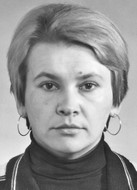Adaptive and compensatory resource building in physical rehabilitation of gymnasts with spinal cord injuries
Фотографии:
ˑ:
PhD, Associate Professor S.Ya. Koval1
PhD, Associate Professor O.V. Khomyakova1
PhD, Associate Professor E.Y. Shishko1
PhD, Associate Professor E.I. Nagaeva1
PhD, Associate Professor V.F. Krovyakov1
1V.I. Vernadsky Crimean Federal University, Simferopol
The study analyzes benefits of a special physical rehabilitation model applied to gymnasts with spinal cord injuries and geared to build up the physical functionality, compensatory resource and muscular strength. The model piloting experiment has been performed at Burdenko Sanatorium in Saki for 2 months on a daily basis. Sampled for the study were 30-33 years old (n=20) former gymnasts with 5+ year long spinal injuries at the final stage of post-spinal-cord-injury (severity class D10-L1) rehabilitation.
The physical rehabilitation model was found beneficial as verified by the sample’s progress in the motor abilities driven by the replacement compensation principle i.e. with the impaired muscles of the transitional zone above the injury being engaged in the practices together with healthy muscle groups. A set of special isometric, dynamic and corrective exercises applied by the model was intended to build strength in the muscles and scale down the muscular deformations, overtone and hyperspasticity rates. The rehabilitation processes were facilitated by the therapeutic massage to normalize the metabolic processes in the body tissues, improve the lymph/ blood flows, mitigate pains, speed up the nervous fibers regeneration, reinforce the musculoskeletal system, build up strength, prevent and reduce atrophy and, hence, to make the patients more physically active. The physical rehabilitation model was tested to improve the bodily adaptive, reserve and compensatory resources and, therefore, may be recommended for rehabilitation of athletes after spinal (lower thoracic) cord injuries.
Keywords: adaptation, compensation, motor functions, gymnasts, spinal cord injuries.
References
- Andryushchenko L.B., Averyasova Yu.O., Yurku F.A. et al Organizatsiya i metodika uchebno-trenirovochnykh zanyatiy po basketbolu na kolyaskakh [Organization and methodology of basketball education and training classes on wheelchairs]. Mat. mezhdunar. nauch.-prakt. konf. ‘Olimpiyskoe dvizhenie: obrazovanie, gender, menedzhment, marketing, sport’ [Proc. Intern. res.-pract. conf. ‘Olympic movement: education, gender, management, marketing, sports’], 2017, pp. 113-118.
- Koval S.Ya., Khomyakova O.V., Redko A.B. et al Innovatsionnye podkhody v reabilitatsii bolnykh s nizhnimi parezami vsledstvie spinno-mozgovoy travmy na urovne D10-L1 [Innovative approaches in rehabilitation of patients with lower paresis due to spinal cord injury levels D10-L1]. Tavricheskiy mediko-biologicheskiy vestnik, 2013, vol. 16, no. 3-3, pp. 48-51.
- Kondrakov G.B., Andryushchenko L.B., Bezveselnaya Z.V. et al Kontseptsiya formirovaniya rekreatsionnoy fizicheskoy kultury v ekonomicheskom vuze [The concept of formation of recreational physical culture in institution of economics]. Teoriya i praktika fiz. kultury, 2016, no. 9, pp. 22-24.
- Mamonova O.V., Andryushchenko, L.B., Filimonova Yu.B. et al Osobennosti fizicheskogo samovospitaniya studentov s osobymi obrazovatelnymi potrebnostyami [Features of Physical Self-Education of Students with Special Educational Needs]. Kultura fizicheskaya i zdorovye, 2018, no. 1 (65), pp. 20-23.
- Molskaya N.E. Klinicheskie neyrofiziologicheskie predposyilki k vosstanovleniyu dvigatelnoy aktivnosti bolnykh so spinnomozgovoy travmoy [Clinical neurophysiological prerequisites for restoration of motor activity in patients with spinal cord injury]. Neurologicheskaya patologiya spinnogo mozga [Neurosurgical pathology of spinal cord]. Moscow: Meditsina publ., 1996, pp. 120-123.
- Stoporov A.G., Redko B.P. Mediko-sotsialnaya reabilitatsiya invalidov s posledstviyami travm i zabolevaniyami spinnogo mozga [Medical and social rehabilitation of disabled people after injuries and diseases of the spinal cord]. Kiev: Invasport publ., 1997, 96 p.
- Stoporov A.G. Nekotorye aspekty integralnoy otsenki obschey kompensatsii bolnykh perenesshikh pozvonochno-spinnomozgovuyu travmu [Some aspects of integrated assessment of general compensation for patients with spinal cord injury]. Vestnik fizioterapii i kurortologii, 2007, no. 2, pp. 172–177.




 Журнал "THEORY AND PRACTICE
Журнал "THEORY AND PRACTICE